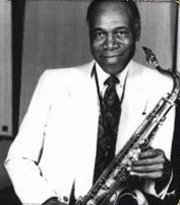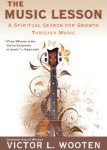Ike Quebec on tenor sax
Freddie Roach on jazz organ
Milt Hinton on bass
Al Herewood on drums
Thanks Eddie for pointing this out to me, hadn’t heard much Ike Quebec before.
Ike Quebec on tenor sax
Freddie Roach on jazz organ
Milt Hinton on bass
Al Herewood on drums
Thanks Eddie for pointing this out to me, hadn’t heard much Ike Quebec before.
By Neal 2 Comments
Lenny Pickett played all over the place. Tower of Power’s horn section has performed with a variety of other artists including Santana, Heart, Poison, Phish, and more.
Lenny Pickett has since performed live and recorded with Rod Stewart, Elton John, Little Feat, Peter Gordon’s Love of Life Orchestra, Doc Kupka’s Strokeland Superband, and many rock and jazz albums and film and television soundtracks. Pickett’s management’s bio describes his music as “polyphonic extravaganzas which manage to touch base with r&b, funk, swing, Latin influence and the avant-garde; horn lines twist around one another, shifting and building in intensity.”

He has worked as a saxophonist and arranger for David Bowie, the Talking heads, and Laurie Anderson. As a composer he has been commissioned to write works mixing classical and popular ideas for a variety of ensembles including the New Century Saxophone Quartet. Due to his strange and wild self taught style, his techniques are endlessly discussed on Internet forums, where players speculate on his fingering, whether or not he’s using double or triple tounging, often asking each other “What is Pickett doing?!??!”
He is currently a professor of jazz saxophone for New York University.
I took lessons from Todd when I was starting and came back to take some more later on. He studied with Joe Henderson back in the day.
By Neal 4 Comments
If you want to know how to play blues sax you’re going to need to know three basic chords- the I, IV, and V.
 The basic form of blues goes like-
The basic form of blues goes like-
I7 | I7 | I7 | I7
IV7 | IV7 | I7 | I7
V7 | IV7 | I7 | I7
So it starts on the one chord, goes to the four chord, back to the one chord, to the five, to the four, to the one.
There’s something called the ‘blues scale’ that works pretty well over the blues, BUT you don’t want to play it exclusively. It gives a certain sound, which is cool part of the time, however you want to shake things up and throw other things in there.
The blues scale in G goes like:
G – Bb – C – C# – D – F – G
So the root, flat three, four, sharp four (aka lowered five), five, dominant seventh.
One of the good things about knowing the blues scale is that once you have it under your fingers, you can just play the saxophone and not worry too much about notes.
Use it part of the time, but not all the time.
Learn how the chord changes relate to each other and what notes give them distinct sounds as you progress past using just the blues scale.
How to improvise saxophone:
You want to improvise with your sax, eh?

Improvisation is spontaneous composition and you want it to sound good, so you’re going to need to get ready for your solo.
You might not be sure how to get started- not knowing whether you can do it on your own, or if you need a teacher to guide you every step of the way.
Some people get stage fright.
Other times the number of chords that are in the music seem overwhelming.
I have heard solos with one note that sound good…..
But the measures aren’t made up of half notes and half rests using one note. It had rhythm, groove, inflection, phrasing, articulation, emotion & feeling, good tone, rests in the right places, an accomplished technique and the musician would listen to the rest of the group.
Without a solid foundation, you won’t sound good with that one note.
And knowing how to use notes right will make your solo much better.
Think about these elements as you practice and play your saxophone and work on increasing your ability in each of them.
Then when it comes time to improvise and take a solo, you will be ready.
I’m playing tenor sax with my band Salson in Aptos, CA a few months back.
The song is ‘Lagrimas Negras’ that we’re playing as an instrumental.
The video actually comes in at the line before solos, then I take the first solo, followed by James on piano.
It was taken on a flip.
After Selmer had crazy popularity with the Mark VI, they thought they could do better…..

So they made the Mark VII.
It ended up being a definite step down from the Mark VI.
The Mark VII actually isn’t a bad horn, it’s just not as good as the Mark VI.
The Reference Series by Selmer are trying to replicate the Mark VI, and they’ve come close, but it’s not quit the same.
The Music Lesson
When you’re supposed to be playing in a major key- you’ve got 7 ‘right’ notes and 5 ‘wrong’ notes, but as Wooten says- even those five are just a half step away from a ‘right’ note.
And if you play the ‘wrong’ note leading to a ‘right’ note, it doesn’t sound like you did something you didn’t mean to, as long as you do it with conviction.
Restricting yourself to seven notes doesn’t always make sense….
Here is Victor Wooten in action, I love the little quote from Peter and Wolf at about 4:15:
Just got  The Music Lesson: A Spiritual Search for Growth Through Music
The Music Lesson: A Spiritual Search for Growth Through Music
by Victor Wooten and it’s amazing. I heard about the book in June and again recently from George Young.
I wish I had read this book earlier.
One of the first things Victor Wooten does is show how his teacher, Michael, broke down how music is not all about notes.
Notes are important, but they are only an element of the equation.
Groove, Feel, Rhythm, etc are equally important and as a group are much more important than just notes.
You can still have music without notes- think of Brazillian rhythms that are played on drums and percussion.
There was some interesting stuff about vibrations too- like how rhythm is just notes slowed way down. An A 440 vibrates at 440 times per second and if you slow things down, eventually you get to rhtyhms that are closer to one per second. Or a few more in fast bebop.
Phil Woods on alto sax playing ‘And When Were Young’ in 1968
By Neal 2 Comments
Alternate fingerings on saxophone can help make patterns easier and faster.

There are three main Bb fingerings- side Bb, bis key, 1&1- but the 1&1 fingering can often be done as 1&2 or 1&3. It depends on your horn though.
There are alternates for G#/Ab too- you can hold down the left hand’s pinky on the normal key for G#/Ab or use the pinky key for low C#, low B, low Bb- they all do the same thing.
For the note D- you can use the palm key to either make it open up, or as a faster fingering in some situations.
High E can be played similarly to the high F fingering that doesn’t use the palm keys. You also put the second finger of your right hand down.
If you immediately spot some I left out, leave a comment!


Want to play saxophone, but feeling lost and not sure how to get started?
In this online/downloadable class you will see methodical lessons in a sequence and you can get feedback and ask questions at any point.
Learn more
Want to take your playing to the next level?
You’ll learn fundamental saxophone skills, building past the basics. Master rhythms. Learn about phrasing, tone, and more. Here you will get feedback which is crucial to developing good habits.
Learn more